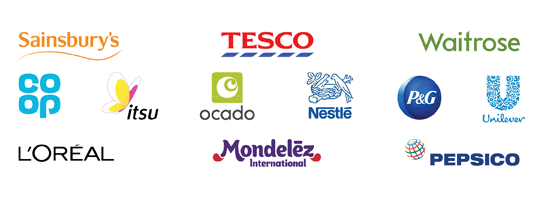September 26, 2017 Opinion piece
In this second blog in the series, Jim Dickson, Head of Grocery Retail, looks at the way industry has come together to finally solve the problem of poor quality product data.
Digital DNA is a collaborative industry-wide programme, bringing retailers and brands together to design and create a common approach to manage and share product data across the UK grocery sector.
The programme started over a year ago now, when the GS1 UK Retail Grocery Advisory Board first met, to discuss the common problems they all faced. Very soon this group of leading retailers and brands understood that the one problem they all had was with poor quality and inconsistent product data – and how they could not ensure product data is accurate 100% of the time and consistent across all channels.
Of course, this isn’t a new problem. The UK grocery sector has struggled with it for many years. Yet according to industry analysis, improving product data in the value chain could unlock up to £2 billion worth of opportunities for the industry, by enhancing the consumer experience, in-store and online.
The solution has been achieved in some countries already, such as the Netherlands and Australia, but closer to home, UK businesses have so far been unable to achieve a cross-industry approach to sharing product data – creating enormous inefficiencies in the market.
Which is why the Digital DNA programme was born and why over the past year we’ve been working with an increasing number of retailers and brands on it – with the key objective to define an industry-wide solution that enables retailers and suppliers to share high quality product data.
Where we are today
Working with our industry partners, we realised that without a solution, the problems associated with poor quality product data are only going to get worse as the number of required product attributes could easily hit 250 within the next five years – producing an even bigger data problem for everyone.
And as more shopping channels open up, brands are having to deal with more trading partners, requiring more data, in different formats. Doing nothing was no longer an option.
Just two months ago, the Digital DNA Industry Charter was released, signed by 12 leading retailers and brands. These are the companies who we have worked tirelessly in developing a proposal for a standardised approach to deliver high quality product data – for the benefit of the whole UK grocery industry.

But Digital DNA will go further than just this. It is a transformational programme for the grocery industry. It will reset the fundamentals of product data sharing between retailers and supplier by providing:
- One way of introducing new products
- One way of making changes to products
- One language to describe products
- One view of B2B2C data across the industry
The Digital DNA programme is being tested by the industry group to ensure it meets their needs and supports their future business processes, in turn enabling their transformations. The full service will be available for industry in 2018, uniquely offering business-to-business and business-to-consumer data exchange through a single service, available to companies of all sizes.
If you want to get involved, then get in touch today.
In my next blog I'll talk about what accurate product data will mean to retailers, brands and shoppers.
 E: jim.dickson@gs1uk.org
E: jim.dickson@gs1uk.org
T: +44 (0)7823 526354 ![]() www.linkedin.com/jim-dickson
www.linkedin.com/jim-dickson
Related
The industry-wide problem of poor quality product data